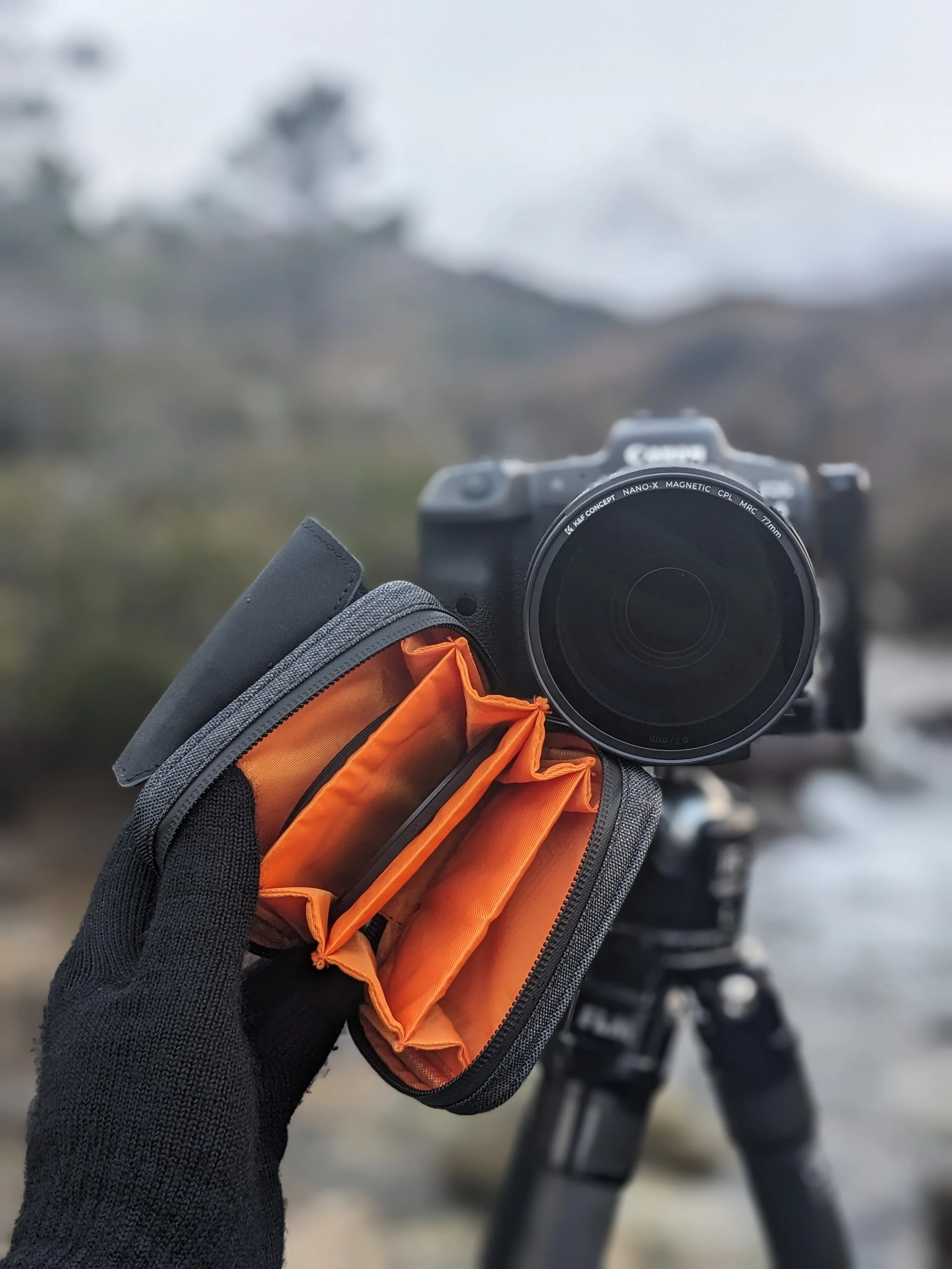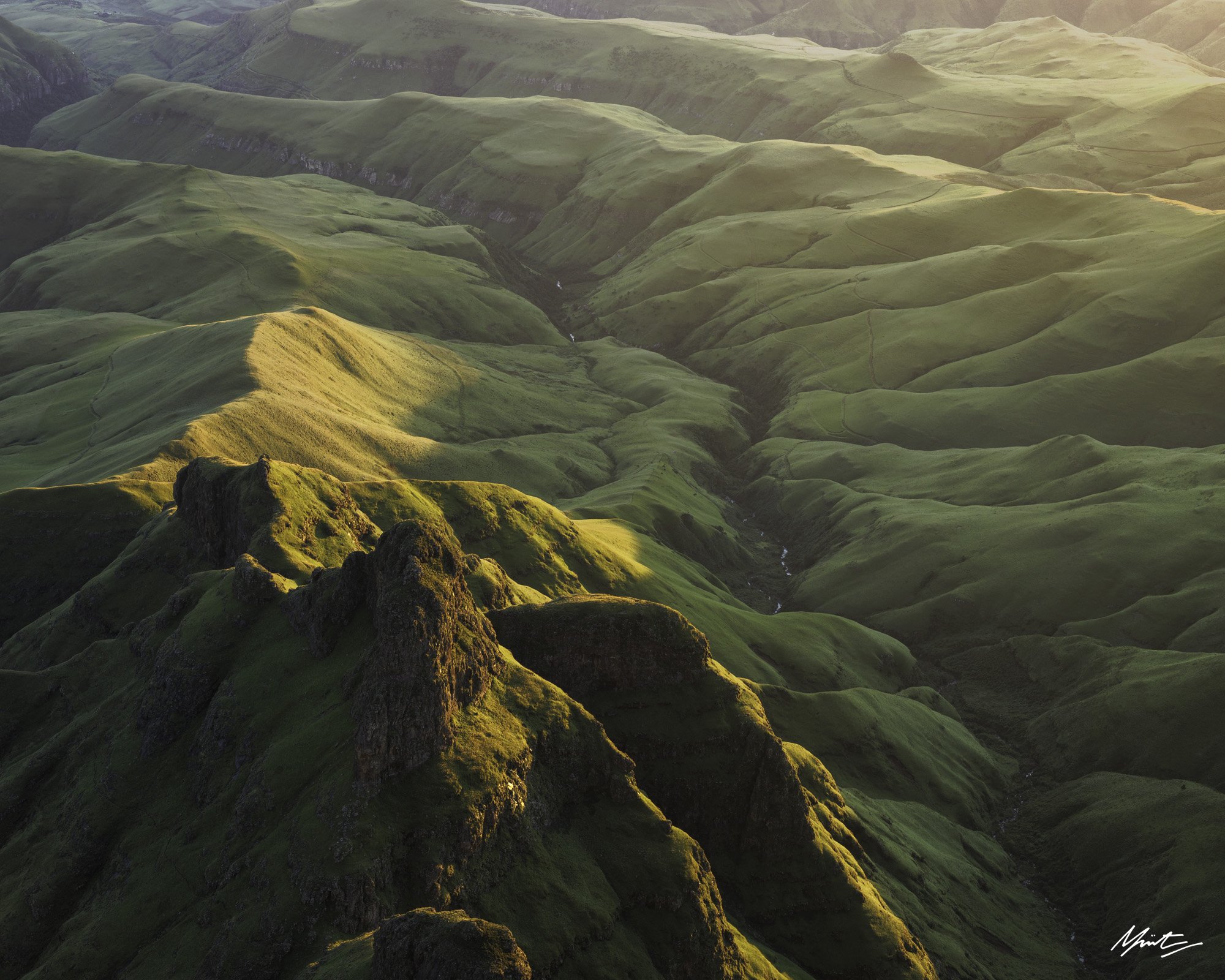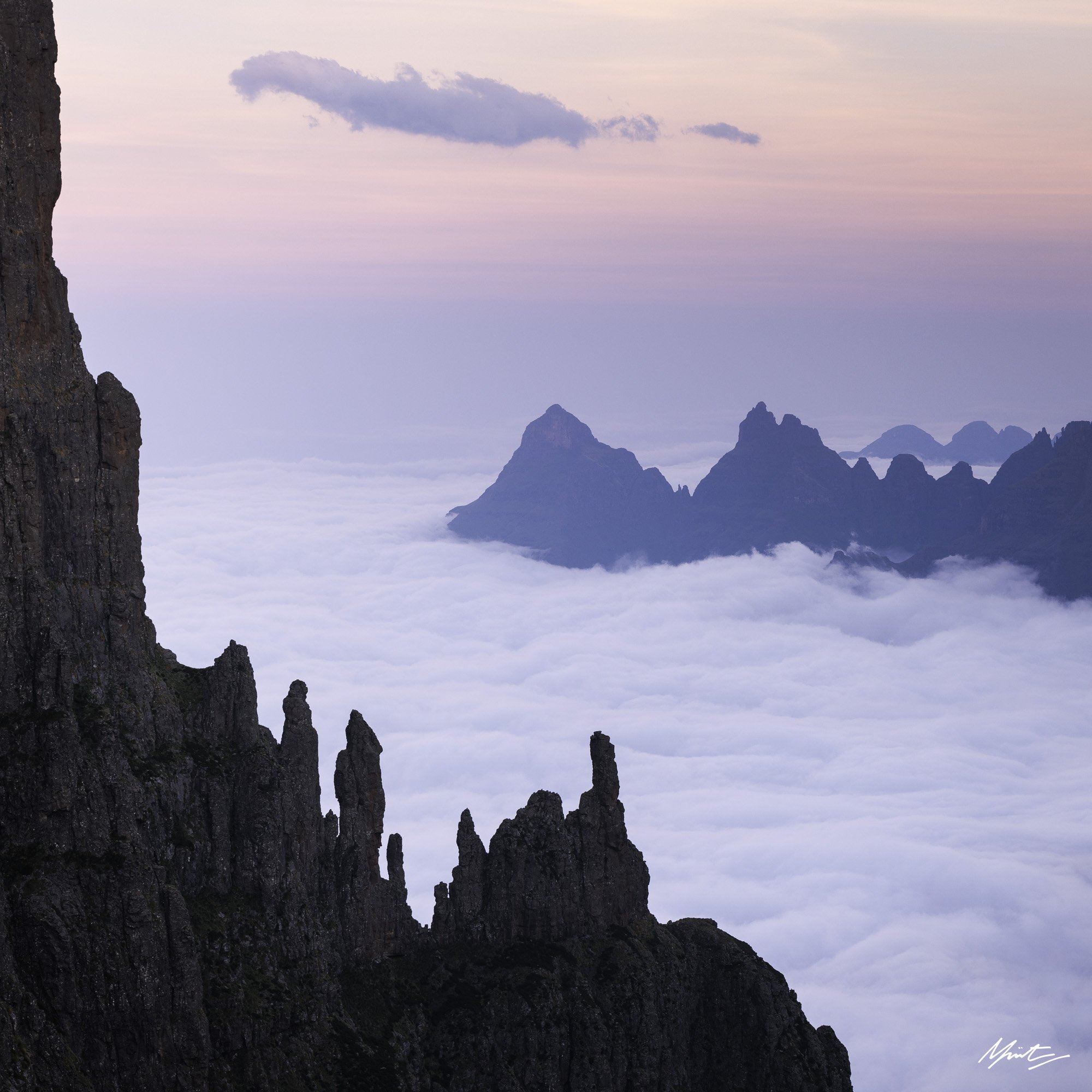Kentfaith K&F Concept Nano X Magnetic Lens Filters Review
In this review of the Kentfaith K&F Concept Nano X Magnetic Lens filters I discuss my experience after using the filters over the last 10 months, talk about why magnetic filters are the best choice for landscape photographers, and weigh up if these “budget” filters are worth purchasing. I have also produced 2 video reviews if you want to see more!
TLDR: I think these are some of the best value for money magnetic filters on the market. I’ve tested them in -12C snow storms in Torridon, 70mph winds on the Isle of Harris (sand. everywhere.), and up at 3000masl on the Drakensberg escarpment and they have held up great in all conditions. Colour is super accurate, image quality is fantastic, I’ve had no issues with coatings, and the magnets work exactly as you want them to. There are one or two areas that could be improved, but these are absolutely not dealbreakers.
(Please note: this post contains affiliate links. These don’t cost you any extra, but I earn a small commission.)
Initial Review and 3 Weeks of Field Testing in Scotland
6 Month Long Term Review
K&F Kentfaith Nano-X Magnetic Filter Set
Included in this particular kit is the ND1000, CPL, UV, and magnetic adapter ring as well as a carry case (not pictured).
Filter Overview
Weight: 250g (82mm filters in Pouch: ND1000, ND64, ND8, CPL)
Size: 11x3.5x11.5cm (4.3x1.3x4.5")
Cost: Full set from about £160 (less with discount codes)
I had been eyeing up some magnetic filters for quite some time (previously I was using big 100mm square filters), so when Kentfaith reached out at the end of 2023 and offered to send me a set of filters for testing and review, I said yes please! No compensation was exchanged and Kentfaith agreed to my terms that they wouldn’t see any drafts or have any say in the content I produced (indeed, they don’t even know I am writing this blog post). With that disclosure out of the way, my reviews always try to be as unbiased as possible. I strive to offer honest insight and feedback wherever possible - which you’ll see as we go through both the pros and the cons of these filters.
Why did I want magnetic filters and why might you? Simply put, they are faster and easier to use. This means you’ll use them more often. There’s nothing more frustrating than conditions suddenly changing and needing to put on an ND filter only for it to take 3 minutes to assemble a traditional 100mm square system or faff about with screwing on a threaded filter. Then when you go to finally make the image, the light has changed again and you miss the photo. Magnetic lens filters really do snap on and off in a matter of seconds. There is also the added benefit of never having a threaded filter get stuck on your lens again. Too many times have I heard stories from friends of stuck threaded filters and them either having to wrench it off with a tool or smash the filter all together. And lastly, magnetic filters are far more compact and lightweight compared to traditional systems. I’ll touch on this more later.
Quiver Tree Forest, South Africa, Canon R5, RF24-105mm, & Polariser.
Testing
I wanted to put these filters through the ringer when I first got my hands on them to get a real sense of how they would fare with longer term usage, so 3 weeks in Scotland was a perfect test. I had some incredible photographic conditions, facing -12C freezing cold temperatures in Torridon and 70mph winds as Storm Jocelyn landed on the Isle of Harris. Ice and snow barraged me in the mountains of Torridon and there was constant blowing sand on the wide open beaches of Harris. These filters didn’t miss a beat the entire time.
The magnets performed as expected and were plenty strong in all conditions. I could also take them on and off wearing winter gloves. That being said, the filter magnets themselves seem to be slightly stronger than the magnetic cap in my experience (I would personally prefer if the cap magnet was ever so slightly strengthened). I would also like to see a notch of some kind to help with taking the filters on and off - they are simple flat-edged rings with an etched knurled pattern and so getting them on and off the lens takes some learning of how much grip and pressure to apply. Once you’ve built up the muscle memory it isn’t an issue, but is definitely an area that could be improved on a V2 filter.
On a similar note, the edges of the filters are black metal without colour coding or filter indication. So, it is necessary to place them in the filter holder in the same order every time to keep track of which filter is which (without having to take it out and look at the writing on the front). Alternatively, you could mark them yourself with a sharpie or similar. A minor annoyance at the beginning, but again something you learn to remember with practice. I now don’t even have to look to know which filter I’m taking out.
While out on the Isle of Harris, a friend of mine was using the popular Kase Magnetic filters. I decided to run a side by side test to compare colour accuracy. The images came out so similar, in fact, that I lost track of which image I made with which filter! Yes, I probably should have made a note but in the brutal storm conditions and rush of early morning light I didn’t. The important point, though, was that in practical real world use I was more than happy with the results from both filters as they were indistinguishable from one another. (This test also led me to believe they may even be the same glass… pure speculation and unconfirmed!).
Temperamental, Isle of Harris, Canon R5, RF24-105mm, & Polariser.
My original set was 77mm, matching my lenses’ filter size. I experienced very slight vignetting at 24mm on my Canon RF 24-105mm when stacking filters and so I have since sized up to 82mm filters. Vignetting has pretty much gone away - I only see vignetting when I stack multiple filters at 14mm on my RF 14-35mm in 3:2 aspect ratio (a very rare thing for me to do as polarisation at that wide of a focal length usually introduces other issues). This was fully expected and in real world use is not been something I’ve run into issues with; there is no vignetting with just one filter at 14mm. My overall recommendation for sizing is to go +1 size up from your biggest lens’ filter size. Note that you will need to purchase additional step-down adapters from, for example, 82mm filters to 77mm lens filter thread. I put one adapter on each lens paired with a magnetic lens cap.
Another huge benefit to these filters is the overall weight and size. These filters are nearly half the weight of a comparable 100mm square set (my old set weighed 456g without a bag vs. 250g for the magnetic filters with a case). They also come in a great compact carry case with a sturdy YKK zipper, where most square sets are in a very awkward bulky bag. I do a fair amount of hiking and camping and this has been one of the best changes for me since I can now put my filter case into my chest strap camera bag along with my Canon R5 & RF24-105mm. They are ready to go at a moments notice and I don’t even have to take the backpack off!
Conclusions & Recommendations
I have continued to use these filters ever since my initial 3 weeks of testing. This has included many more weeks in Scotland as well as 6 days at over 3000masl in the Drakensberg Mountains of South Africa. I’ve included a selected gallery of images below to demonstrate some of the results.
Over the last 10 months, they have held up to everything I’ve asked of them and performed admirably. Comparative costs for a similar set of filters from popular brands like Kase or Nisi will be around £350 (more than double Kentfaith), and other top end brands like Maven cost nearly £500. While I don’t doubt the quality of these other products (I have had hands on with some of them), the Kentfaith K&F Concept Nano-X magnetic filters represent the best value for money in my opinion. I would highly recommend these to any one looking for a set of super high quality magnetic lens filters.
Let me know if you’ve thought about picking up a set of magnetic filters or if you have any questions!
Image Examples
















